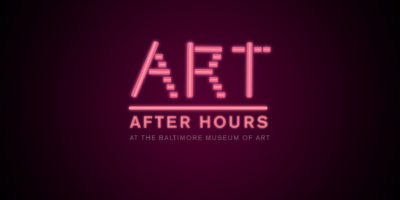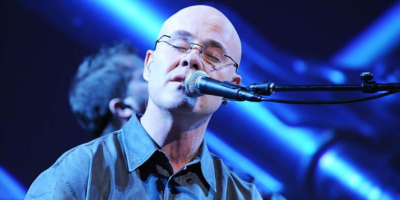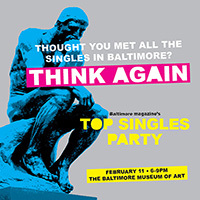A champagne-colored Jaguar pulls to the curb in front of the Hippodrome Theatre on a snowy Sunday afternoon. Two middle-aged women get out, duck under the marquee, and scurry inside as the car departs. Other theatergoers—clustered in groups of two, three, and four—tramp down North Eutaw Street, navigating icy sidewalks and the stream of traffic. Not everyone heads to the Hippodrome’s White Christmas holiday show though—some folks are arriving early for a matinee of Red at Everyman Theatre, around the corner. Adding to the bustle, flocks of fans in purple jerseys walk toward M&T Bank Stadium for the Ravens game, or duck into Alewife to watch it on one of the bar’s televisions.
It’s a scene envisioned by developers and city planners when the Hippodrome reopened 10 years ago after $70 million worth of renovations. The renovation included two adjacent buildings, and the new complex was rechristened the France-Merrick Performing Arts Center.
The theater, seen mostly as a destination for touring Broadway musicals, was trumpeted as the crown jewel in what figured to be a transformative redevelopment of the surrounding area. The Hippodrome was “a project considered crucial to reviving Baltimore’s faded Westside,” according to The Sun and many others. The strategic plan proposed by the Baltimore Development Corporation identified it as “the most significant component of the Westside revitalization effort,” which would infuse the area with “residential, retail, and restaurants to serve the needs of theater patrons, visitors, workers, and residents.”
A decade later, the theater has mostly fulfilled its promise, enduring some rough stretches along the way, while the broader renaissance it was supposed to kick-start never materialized. In fact, the larger Westside project, as embodied by its so-called “Superblock” component, has become synonymous with bureaucratic and legal gridlock. Observers rarely equate the Westside with renaissance these days; instead, terms like “stalled” and “in jeopardy” are more the norm.
“Since 90 percent of the development plans didn’t happen, it leads people to say, ‘I told you that wouldn’t work,’” says Jeff Daniel, president of the France-Merrick Performing Arts Center. “And we get dragged into those negative perceptions about the lack of development.”
So where does the revamped theater, a community anchor in a sea of red tape, turn for much-needed momentum and rebranding as it enters its second decade?
The answer, says Daniel, is to downplay a dubious geographic designation and more fully embrace its role as a local arts organization, which makes sense considering recent developments.
Daniel notes the theater isn’t actually located on the city’s west side—it’s a downtown venue, like the arena, Convention Center, or sports stadiums. He also believes the Hippodrome’s inclusion within the boundaries of the Bromo Tower Arts & Entertainment District, designated in 2012 as the city’s third arts district (after Station North and Highlandtown), is a natural fit for branding and marketing purposes, especially with Everyman in the mix. He feels the theaters can help establish the district’s identity and transform once-blighted properties into arts-centric incubators à la Station North.
“There’s something happening here now, in the past 18 months,” says Daniel of the period coinciding with the arts district designation. “I get information almost daily that indicates we’re at a true tipping point.”
Everyman artistic director Vincent Lancisi concurs. “We’re veteran pioneers, and we know what it’s like to move into an underdeveloped neighborhood,” says Lancisi, who moved his theater to the Bromo Tower Arts & Entertainment District from Station North last year. “We have a ways to go, but something is definitely going on here.”
Sitting in the Hippodrome’s VIP lounge—surrounded by large-format photographs of automobiles by Lexus, the lounge’s corporate sponsor—the 43-year-old Daniel exudes measured, but unwavering, confidence in the overall development process. It can be painfully slow, he points out, and he’s seen it before, in cities like Boston, MA, and San Antonio, TX.
Daniel began his arts administration career 20 years ago, when, as a business major fresh out of Oklahoma State University, he worked with Theater Management Group (TMG) to help restore a vaudeville-era theater in San Antonio. Although he had no theater background, he was hooked. Daniel became general manager at TMG and specialized in devising public-private partnerships to finance the development of historic theaters. He managed venues and promoted touring Broadway shows for Clear Channel after the media behemoth bought TMG in 1998. He also worked on the deal between Clear Channel, the Maryland Stadium Authority, and the nonprofit Hippodrome Foundation that bankrolled the Hippodrome.
“I go way back with this project,” says Daniel. “I was there at the beginning, practically before the beginning.”
Key Brand Entertainment, a company steeped in the development and production of live theater, eventually acquired Clear Channel’s theater assets and hired Daniel for the Hippodrome job in 2009. Upon arriving in Baltimore, he was surprised to learn that Baltimoreans didn’t feel much of a connection to the theater, which was known for productions of blockbusters such as The Producers, The Lion King, and Wicked, but little else. “It was like Clear Channel developed a theater, dropped it downtown, and announced, ‘It’s open,’” recalls Daniel. “It wasn’t presented as a longterm asset for the community, so there seemed to be a disconnect.”
That belief was confirmed when he spoke with Hippodrome staffers. “None of their priorities involved the community or taking a leadership role in the city,” says Daniel. “No one was given any credit for opening the doors and trying new things, which led to a decrease in the amount of people who felt any attachment to the theater and a decrease in the number of people who came here.”
The number of Broadway shows decreased, as well. The revamped Hippodrome was projected to host 26 weeks of theater by 2009, but, when Daniel arrived, it was down to about half that, and the venue was losing money. Coupled with the effects of the recession, it was a downward trend compounded by costly expenditures such as a yearly utility bill of $1 million. The average theater of the Hippodrome’s size pays $180,000.
That figure resulted from an arrangement that allowed the theater to tap into city utility systems instead of constructing its own heating and cooling plant back in 2003. The deal reportedly saved $4 million up front, but its escalating fees and interest were ill-advised for the long-term.
Daniel knew things had to change.
Key Brand
renegotiated the utility arrangement, and, according to Daniel, the
current deal is significantly better, though still more costly than the
average Broadway theater. The Hippodrome retooled its subscription
series, giving patrons more flexibility in their choices, and the number
of subscribers ticked up to 9,000 this year. (It had dwindled to a low
of 8,000 for the 2008-2009 season, after peaking at 14,400 in
2004-2005.)
The theater also expanded its offerings by presenting events like the Foodie Experience and a touring MythBusters show, as well as concerts by the likes of Neil Young and Styx. Daniel mentions he’d like to see an outside arts presenter curate and book a series of modern dance, ballet, and children’s shows to further expand the Hippodrome’s programming.
The moves are apparently paying off. As a private company, Key Brand doesn’t disclose figures, but Daniel claims the venue is now profitable. “We were losing considerable sums when we got here, and we stopped that,” he says. “We’re not making considerable sums, but we have a lot to be proud of.”
With finances under control, Daniel has worked on improving the Hippodrome’s community standing. With help from the nonprofit Hippodrome Foundation, the theater brought Soulful Symphony, the predominantly African-American orchestra led by Darin Atwater, aboard for a residency and shows, including an upcoming concert in May. The foundation also sponsors a summer arts camp (Camp Hippodrome), a Young Critics Program (run by Geoffrey Himes, an occasional Baltimore contributor), master classes for local high-school students, and outreach programs at libraries, senior centers, and hospitals.
“The development of the Hippodrome Foundation has been important, because what we do can’t stop at the theater walls,” says Daniel. “It should extend into the neighborhood, where we can take a leadership role.”
With that in mind, the Hippodrome figures to be a major player in the new arts district. Bounded by Paca Street to the west and Park Avenue to the east, it extends from Lombard Street into Mt. Vernon and includes a variety of arts organizations—from the Maryland Historical Society and Eubie Blake National Jazz Institute and Cultural Center to Arena Players and galleries like Sub-Basement Artist Studios, Current Space, and Gallery Four. The designation, says Bromo Tower Arts & Entertainment District director Priya Bhayana, not only provides tax incentives for arts-related development, it also “strengthens a critical sense of community that creates a framework for [these organizations] to recognize one another, collaborate, and participate in strategic and thoughtful planning for the neighborhood.”
Everyone pretty much agrees the district already has significant daytime foot traffic from the nearby University of Maryland, Baltimore campus, the University of Maryland Medical Center, and various government offices. Thanks to such entities, it also has a highly educated base of local residents. What it needs is more foot traffic at night, enhanced safety measures, and a solid infrastructure of services for residents, who generally shop and dine elsewhere.
The same goes for Hippodrome patrons. “They drop in to see shows, get in their cars, and leave,” says Daniel, who believes that initiatives like the arts district designation, the proposed renovation of Lexington Market, and David S. Brown’s new Baltimore Street high-rise—a mix of apartments, office space, and retail—can help provide needed amenities for the Hippodrome’s coming decade.
In the meantime, Daniel says it would be great if some of the folks coming to this month’s run of The Book of Mormon drop in to see what’s on view at Current or check out what’s happening at EMP Collective. “There’s actually a lot going on already,” he says. “It’s not like we’re out here in the badlands by ourselves.”
John Lewis is arts and culture editor at Baltimore.























